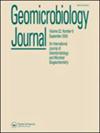Application of Microorganisms in Biotransformation and Bioremediation of Environmental Contaminant: A Review
IF 2.2
4区 环境科学与生态学
Q3 ENVIRONMENTAL SCIENCES
引用次数: 1
Abstract
AbstractThe increase in population has resulted in a rapid increase in waste that is being dumped within the environment. The addition of various harmful and contaminating compounds results in the degradation of the environment and has a direct impact on human health. Various research studies that are taking place in recent times help in the enhancement of the naturally available microbes to degrade toxic compounds that are liberated into the environment. Although various types of bioremediation techniques are available, microbe-associated remediation is proven to be the best option due to its effectiveness, no generation of toxic by-products, and natural availability of microbes with the ability to take up nutrients from the toxic contaminants that exist on the surface of the earth. Both ex situ and in situ bioremediation can be accomplished with the help of these microbes. In most cases, this is done through biofilm-assisted seclusion of pollutants, more precisely by means of extracellular polymeric substances (EPSs) of biofilm matrix. In recent times, various types of techniques have been implemented like proteomics, genomics, fluxomics and transcriptomics for bringing about maximum remediation by the microbial species. In order to explore the different kinds of microbial communities involved in natural bioremediation, the strategic approach of metagenomic analysis is adopted, which has brought about a technological drift in remediation, even at a genomic level. As chemical mode of remediating wastes are associated with the release of various harmful chemicals those can be toxic to the environment, the use of biological systems can be a potential agent in the conversion of complex waste materials to simpler substances so that it mixes with the environment in easier manner. Microbes are the potential entities that can easily act on the waste materials and bring about remediation in an effective manner.Keywords: Biofilmbioremediationmicrobesomicsorganic wastepollutant Disclosure statementNo potential conflict of interest was reported by the author(s).微生物在环境污染物生物转化与生物修复中的应用综述
【摘要】人口的增长导致了向环境中倾倒垃圾的迅速增加。各种有害和污染化合物的加入导致环境退化,并对人类健康产生直接影响。最近正在进行的各种研究有助于增强自然可用的微生物来降解释放到环境中的有毒化合物。尽管有各种类型的生物修复技术可供使用,但微生物相关的修复被证明是最佳选择,因为它有效,不会产生有毒副产物,并且微生物具有从地球表面存在的有毒污染物中吸收营养物质的能力。在这些微生物的帮助下,可以完成非原位和原位生物修复。在大多数情况下,这是通过生物膜辅助的污染物隔离来实现的,更准确地说,是通过生物膜基质的细胞外聚合物物质(eps)来实现的。近年来,蛋白质组学、基因组学、通量组学和转录组学等多种技术被广泛应用,以最大限度地发挥微生物物种的修复作用。为了探索参与自然生物修复的不同种类的微生物群落,采用了宏基因组分析的战略方法,这带来了修复的技术漂移,甚至在基因组水平上。由于废物的化学修复方式与各种有害化学物质的释放有关,这些化学物质可能对环境有毒,因此使用生物系统可以将复杂的废物转化为更简单的物质,使其更容易与环境混合。微生物是一种很容易作用于废弃物并能有效修复的潜在实体。关键词:生物膜生物修复微生物组有机废物污染物披露声明作者未报告潜在利益冲突。
本文章由计算机程序翻译,如有差异,请以英文原文为准。
求助全文
约1分钟内获得全文
求助全文
来源期刊

Geomicrobiology Journal
环境科学-地球科学综合
CiteScore
4.80
自引率
8.70%
发文量
70
审稿时长
3.3 months
期刊介绍:
Geomicrobiology Journal is a unified vehicle for research and review articles in geomicrobiology and microbial biogeochemistry. One or two special issues devoted to specific geomicrobiological topics are published each year. General articles deal with microbial transformations of geologically important minerals and elements, including those that occur in marine and freshwater environments, soils, mineral deposits and rock formations, and the environmental biogeochemical impact of these transformations. In this context, the functions of Bacteria and Archaea, yeasts, filamentous fungi, micro-algae, protists, and their viruses as geochemical agents are examined.
Articles may stress the nature of specific geologically important microorganisms and their activities, or the environmental and geological consequences of geomicrobiological activity.
The Journal covers an array of topics such as:
microbial weathering;
microbial roles in the formation and degradation of specific minerals;
mineralization of organic matter;
petroleum microbiology;
subsurface microbiology;
biofilm form and function, and other interfacial phenomena of geological importance;
biogeochemical cycling of elements;
isotopic fractionation;
paleomicrobiology.
Applied topics such as bioleaching microbiology, geomicrobiological prospecting, and groundwater pollution microbiology are addressed. New methods and techniques applied in geomicrobiological studies are also considered.
 求助内容:
求助内容: 应助结果提醒方式:
应助结果提醒方式:


